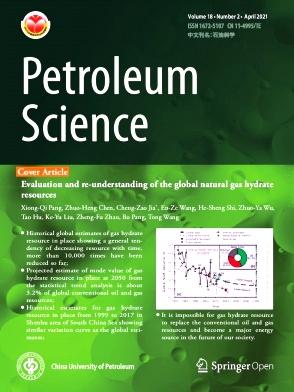小波变换在裂谷盆地粗粒沉积物高频层序地层分析中的选择与应用
IF 6.1
1区 工程技术
Q2 ENERGY & FUELS
引用次数: 0
摘要
小波变换是一种广泛应用于高频序列地层分析的方法。然而,由于不同的小波总是返回相同的序列分析结果,因此在应用中存在问题。针对这一问题,我们将五种常用的小波应用于理论层序模型,以记录一些应用标准。我们从重力流作用下的糯橄榄岩演替沉积简化出五个渐变尺度序列模型,形成了细化向上循环序列(FUCS)和粗化向上循环序列(CUCS)。在进行了理论序列模型试验后,选出了最优小波(sym4),并成功地与实际数据相结合,确定了序列边界。我们还提出了一种优化连续小波变换(CWT)尺度以确定序列边界的新方法。我们发现,db4、sym4 和 coif4 小波扫描图中的气球状标记分别确定了四阶序列边界、FUCS 中的厚演替序列边界以及 FUCS 和 CUCS 中的厚演替序列。对比序列识别结果表明,非对称小波在高频序列边界判定和沉积周期判别中通过系数的振幅趋势具有优势,其中 sym4 小波的效果最好。总之,小波的非对称性是第一选择原则,其中非对称小波对洪流沉积更为敏感。序列之间的小波匹配是第二个选择原则,其中时频的相关性影响序列表面定位的准确性。然而,小波的波形是序列边界检测的一个直观和抽象的参数。适合于湖泊序列分析的小波是侧裂片数量较少的不对称小波。沉积流、沉积过程和自生是影响序列分析结果的三个沉积因素。本文章由计算机程序翻译,如有差异,请以英文原文为准。
Selection and application of wavelet transform in high-frequency sequence stratigraphy analysis of coarse-grained sediment in rift basin
Wavelet transformation is a widely used method in high-frequency sequence stratigraphic analysis. However, the application is problematic since different wavelets always return the same sequence analysis results. To address this issue, we applied five commonly used wavelets to theoretical sequence models to document some application criteria. Five gradual scale-change sequence models were simplified from the glutenite succession deposition by gravity flows to form the fining-upwards cycle sequences (FUCS) and coarsening-upwards cycle sequences (CUCS). After conducting theoretical sequence model tests, the optimal wavelet (sym4) was selected and successfully used with actual data to identify the sequence boundaries. We also proposed a new method to optimize the scale of continuous wavelet transformation (CWT) for sequence boundary determination. We found that the balloon-like marks in scalograms of db4, sym4, and coif4 wavelet determine, respectively, the fourth-order sequence boundary, the thick succession sequence boundaries in FUCS, and the thick succession sequence in FUCS and CUCS. Comparing the sequence identification results shows that the asymmetric wavelets had an advantage in high-frequency sequence boundary determination and sedimentary cycle discrimination through the amplitude trend of the coefficient, in which the sym4 wavelet is the most effective. In conclusion, the asymmetry of wavelets is the first selection principle, of which asymmetric wavelets are more sensitive to sediment deposition by flood flows. The match of the wavelet between the sequence is the second selection principle, in which the correlation of time-frequency impacts the accuracy of sequence surface localization. However, the waveform of the wavelet is a visual and abstract parameter for sequence boundary detection. The appropriate wavelet for lacustrine sequence analysis is the asymmetric wavelet with a weak number of side lobes. The depositional flows, depositional process, and autogenic are three sedimentary factors that influence the sequence analysis results.
求助全文
通过发布文献求助,成功后即可免费获取论文全文。
去求助
来源期刊

Petroleum Science
地学-地球化学与地球物理
CiteScore
7.70
自引率
16.10%
发文量
311
审稿时长
63 days
期刊介绍:
Petroleum Science is the only English journal in China on petroleum science and technology that is intended for professionals engaged in petroleum science research and technical applications all over the world, as well as the managerial personnel of oil companies. It covers petroleum geology, petroleum geophysics, petroleum engineering, petrochemistry & chemical engineering, petroleum mechanics, and economic management. It aims to introduce the latest results in oil industry research in China, promote cooperation in petroleum science research between China and the rest of the world, and build a bridge for scientific communication between China and the world.
 求助内容:
求助内容: 应助结果提醒方式:
应助结果提醒方式:


